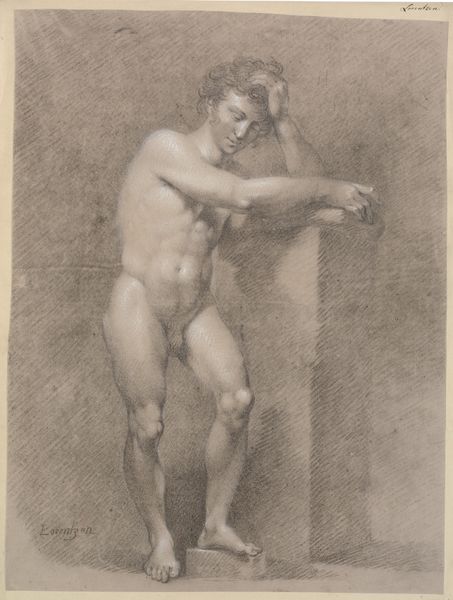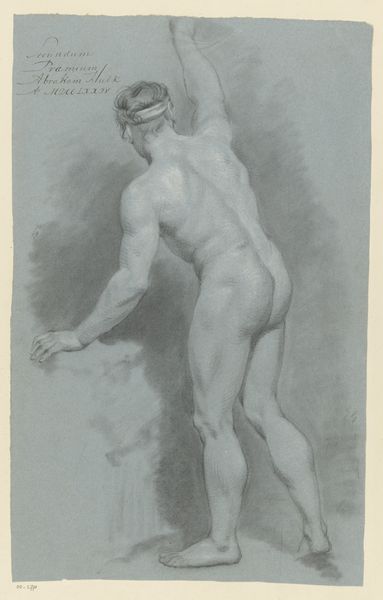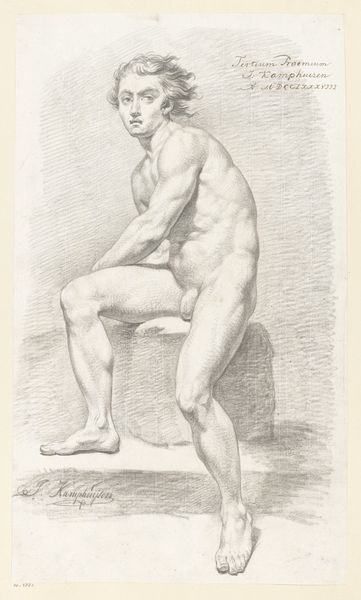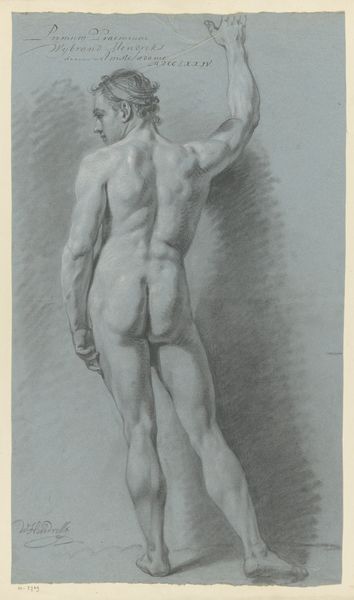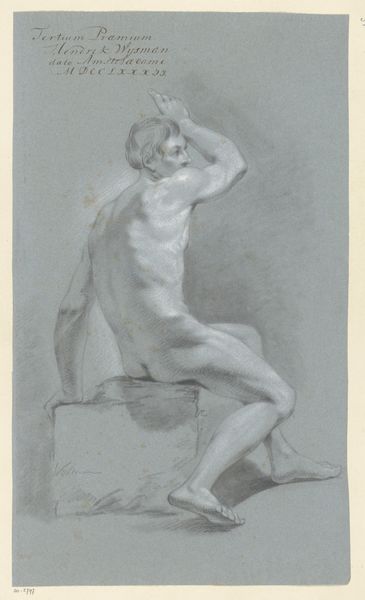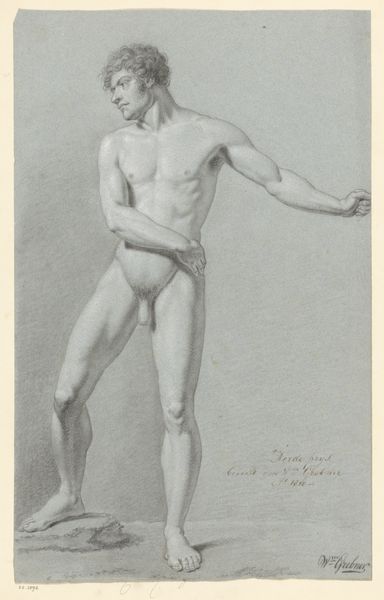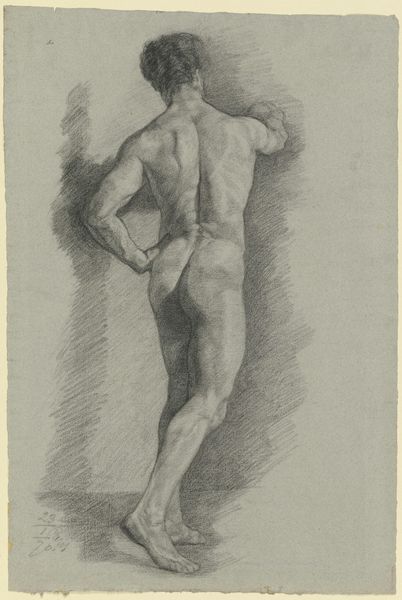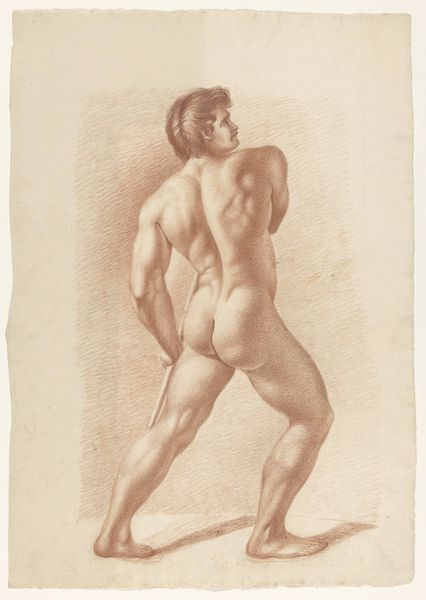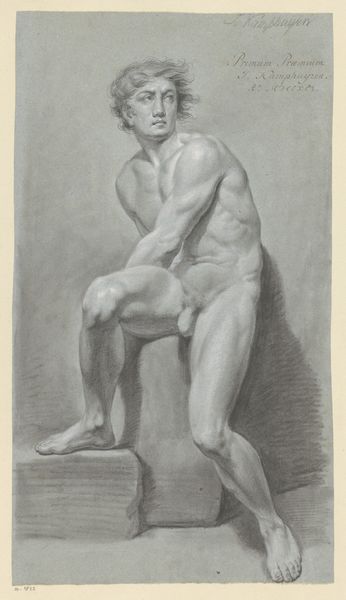
drawing, charcoal
#
portrait
#
drawing
#
charcoal drawing
#
figuration
#
pencil drawing
#
romanticism
#
portrait drawing
#
charcoal
#
academic-art
#
nude
#
portrait art
Dimensions: height 546 mm, width 374 mm
Copyright: Rijks Museum: Open Domain
Curator: Here we have "Zittend mannelijk naakt, van voren gezien met de handen op de rug," or "Seated Male Nude, Front View with Hands Behind Back," a charcoal drawing created circa 1826 by A. Waterloo. What strikes you initially? Editor: The subdued lighting immediately gives it a sense of drama. Note how the artist employs chiaroscuro to define musculature and highlight form. There’s something incredibly tense about his pose as well. Curator: Yes, the academic style is evident in its careful study of human anatomy, reminiscent of the Romantic period's fascination with the ideal form. The use of charcoal as the medium here speaks to a tradition of workshop sketches and figure studies that supported the larger art-making process. I wonder where the paper came from. What were the available charcoal brands at the time? Editor: In terms of the overall composition, it adheres to classical principles—stable, pyramidal, yet possessing an energy thanks to that contrapposto. Consider the cool monochrome palette. It focuses the eye entirely on the form, allowing for intricate modeling. Curator: But beyond a formal study, could this be read as a critique? The nude male body presented not as heroic, but vulnerable, constrained by his posture...is this challenging prevailing norms regarding labor and artistic representation? This may represent one of the few surviving sketches created by pupils of masters that ended up outliving many finished master paintings. Editor: I concede the pose lends a vulnerability, perhaps challenging conventional heroic representations. Yet, to me, it’s the sheer mastery of representing the human form that commands attention. Note the textural contrast—the smooth skin versus the rough shading. Curator: It is also the use of widely accessible material and a fairly well distributed support material that helps maintain and preserve the image of the idealized athletic body throughout generations to come, serving both educational and aspirational functions. Editor: I see your point about the medium. The choice is perhaps not merely technical, but laden with socio-economic implications as well. Regardless, the artwork is quite powerful. Curator: Indeed, seeing the interaction of available materials combined with a common theme has offered fresh perspectives. Editor: Yes, considering the relationship of technique and social context alongside composition provides a rich and complex interpretation.
Comments
No comments
Be the first to comment and join the conversation on the ultimate creative platform.

